|
|
RADIOALUMNI.CA |
|
|
CANADIAN EPICS IN RADIOCOMMUNICATION ALUMNI WHO LIVED THE ADVENTURE OF RADIO WIRELESS TELEGRAPHISTS - SPARKS - RADIO PIONEERS RADIO OPERATORS - RADIO TECHNICIANS RADIO TECHNOLOGISTS - RADIO ENGINEERS RADIO INSPECTORS - SPECTRUM MANAGERS |
|
ÉPOPÉES CANADIENNES EN RADIOCOMMUNICATION LES ANCIENS QUI ONT VÉCU L'AVENTURE DE LA RADIO TÉLÉGRAPHISTES SANS FIL - PIONNIERS DE LA RADIO OPÉRATEURS RADIO - TECHNICIENS RADIO TECHNOLOGUES RADIO - INGÉNIEURS RADIO INSPECTEURS RADIO - GESTIONNAIRES DU SPECTRE |
His Work in Broadcast Engineering in Radio Division of the Department of Transport By W. J. Wilson
Wilbert's work in connection the implementation of the North-American Regional Broadcast Agreement, Washington, 1950 (NARBA) contributed tremendously to the success of AM radio broadcasting in Canada. This agreement established channel sharing criteria for each of the four classes of broadcast station that were to use the 535-1605 Khz band. Wilbert undertook to ensure first of all, that the radio frequency propagation characteristics used to determine the coverage of AM broadcast stations and based on ground wave conductivity and sky-wave propagation data were accurate as far as Canada was concerned. Secondly, he insisted that that the engineering design and construction of AM broadcast antenna systems, related proofs of performance and maintenance were so well done that Canadian broadcast stations would not interfere with or experience interference from broadcast stations of the other NARBA countries. The result was that AM broadcasting in Canada including North America became technically better that AM broadcasting in the rest of the world as anyone who has listened to AM broadcasting outside the NARBA region, in Europe for example, will tell you.
Wilbert was not sure that the ground conductivity curves for the AM broadcast band frequencies given in the technical literature written prior to 1940 and then available were truly correct. Especially in the Great Lakes region of North America this was of great concern to Canada if the coverage of Canadian broadcasting stations was to be properly protected by United States broadcasting stations and vice-versa. By measuring and analyzing the performance of many broadcast station in that region, with the assistance of G. Clement Ireland and others of his staff, he came to the conclusion that ground conductivity in the Great Lakes area varied considerably. In the Lake Superior area it was about equal to that of fresh water. On the way down to Lake Ontario the conductivity improved considerably. Wilbert put this down to the increasing pollution of the lake water as it flowed toward the St. Lawrence River and the Atlantic. Broadcast station design engineers were then required by the Department to take this new ground conductivity data into consideration in their antenna system designs.
Too, in those early days of radio prior to World War II there was very little information on the measured strength of night-time sky-wave signals in the AM broadcast band received from distant stations in southern latitudes. This information was essential if the night-time performance of Canadian broadcast stations operating on shared channels were to be properly protected. Wilbert set up a research program to get this information. He arranged for his and other DOT Radio Regs staff to continuously record at numerous locations across Canada the signals of U.S. broadcast stations operating on various U.S. clear channels in the 535-1605 Khz band and to measure their night-time signal strengths over long periods at these locations. In this way he was able to assemble the information needed to establish the night-time signal strengths of U.S. broadcasting stations operating on channels which were to be shared with Canadian broadcasting stations. In effect his work supplemented work done in the United States between 1935 and 1946 and augmented available knowledge by covering propagation in a northerly direction over much greater distances than were possible in the States alone.
In the early fall of 1949, Wilbert sent engineer W. G. Robson to Baker Lake, N.W.T. monitoring station to set up an AM station with the assistance of its technical staff. Its three frequencies across the band were the Canadian source of transmissions from North of the Aurora Belt. The U.S. set up a similar system in North Dakota, interweaving frequencies with those received from Canada. All the information gathered from the foregoing was presented to the NARBA preparatory conference in Montreal in 1949 and accepted by the final NARBA conference in Washington in 1950. This ensured that U.S. stations would not interfere with the designed coverage of Canadian stations. Indeed, his work resulted in Canadian stations getting a slight protection edge over U.S. stations.
In early December 1949, ground-wave signal levels were measured from the powerful C. B. C. station at Watrous, Saskatchewan, operating on the Canadian clear channel 540 Khz. It was hoped that a similar channel could be used by the C. B. C. at Sackville in the Maritimes. However, the signal levels were so strong that the proposed station would have seriously interfered with emergency radio equipment used by ships at sea. Some years later, the equipment for ships' radio was redesigned and made able to withstand the signal level from a 540 Khz clear channel broadcast station such as was used at Sackville.
These two studies really brought the then data regarding propagation up to date for Canada and enabled Canadian engineers responsible for the design of the directional antenna systems to design, build and prove in multi-tower arrays that met all the protection requirements of NARBA. The result of this was that Canada developed a group of very skilled engineers specializing in broadcast station design, construction and maintenance work. When the successful performance of Canada's AM broadcast stations became known the other signatories of NARBA allowed Canada to lift the power limitations on Canadian broadcasting stations allowing many of them to go to 50 KW and thus considerably improve their coverage in Canada.
Wilbert built up a first rate engineering team headed by J. T. Chrome, Chief, Broadcast Engineering and Certification, and W. G. Robson, Deputy Chief, assisted by F. K Foster, W. R Dormer, D. M Skanes, D. W. Johnson and others to look after the technical evaluation of all broadcast station engineering briefs and applications submitted to the Department. I was later told by the head of the national association of broadcasters that Canadian broadcasters much preferred to deal with this Radio Regs group rather than the other broadcast regulatory body in Canada.
In 1953 the Department's Radio Division was reorganized and management of the radio spectrum used by all non-departmental radio services was made the responsibility of the Radio Regulations Division under the management of Mr. C. M. Brant, Controller of Radio Regulations.
Ottawa, September 2, 2004. With contributions W.G. Robson.
A propos de Wilbert Smith
Ma collaboration avec Wilbur a été reliée au montage d'un récepteur radio tout -à -fait flyée pour essayer de capter les émissions en provenance de soucoupes ou d'une quelconque planète habitée par des êtres super intelligents.
L'autre projet secret fut la construction d'un récepteur qui demeurait muet mais devenait opérationnel à la réception d'un signal d'onde continue à la fréquence désignée. Ceci permettait d'éliminer le bruit dans une salle de réception avec plusieurs récepteurs. Donc, beaucoup reposant pour les opérateurs et moins distrayant.
Nous sommes allés faire des tests dans le plus grand secret au camp militaire de Petawawa. La synchronisation de l'émetteur et du récepteur à la fréquence désignée était primordiale et une dérivation de la fréquence de l'un ou de l'autre, surtout avec un signal de faible puissance, empêchait le relais.
Une excellente idée innovatrice, mais en avance de la technologie.
Canadian Radio Engineer and Ufologist
Smith did much to encourage improvements in the technical side of broadcasting facilities in Canada, and took a strong personal interest in the formation of the Canadian Association of Broadcast Consultants, which often advised the federal Department of Transport (DOT) on frequency allocation and other technical matters. He also played an important role in liaison between that department and the Canadian Radio Technical Planning Board. In 1939, he joined the federal Department of Transport. He was engaged in engineering Canada's war-time monitoring service and, in 1947, was in charge of establishing a network of ionospheric measurement stations, several of which were in isolated parts of the North.
At the time of his death, he was superintendent of Radio Regulations Engineering with the Department of Transport [DOT], responsible for the engineering aspects of all matters concerning the use of radio in Canada, including equipment standards, radio relay systems (micro-wave), broadcast facilities and interference studies.
Smith's area of research was in radio wave propagation, a study which eventually led him into fields such as auroras, cosmic radiation, atmospheric radio-activity and geo-magnetism. It was the latter of these fields which really attracted his attention and caused him to speculate that the potential energy of the Earth's magnetic field might be extracted and used. He had already progressed to the stage of developing a crude experimental model to demonstrate his theory, and successfully tested the unit which, in his words, "demonstrated the soundness of the basic principles in a qualitative manner and provided useful data for the design of a better unit." (1)
Smith's curiosity got the better of him when he read a magazine article on 'Flying Saucers' in the late 1940s and from then on he took a great interest in investigating flying saucers or UFOs. In DOT, he was engaged in research on the collapse of the Earth's magnetic field as a source of energy. As Smith believed that flying saucers may be operating on magnetic principles, it seemed that this work of DOT might explain their operation.
He believed, quote: "that we are on the track of something which may well prove to be the introduction to a new technology." This "is borne out by the investigations which are being carried on at the present time in relation to flying saucers." (2)
The investigations he
was referring to were those being carried out by the US Government at that
time. In late 1950 Smith had attended a North American Radio Broadcasting
conference in Washington, DC, and while there, made enquiries through the
Canadian Embassy staff who were able to inform him that:
UFOs exist their modus operandi is unknown, but concentrated effort is being made by a small group headed by Dr. Vannevar Bush, (Editor: Of 'MJ12' fame) the entire matter is considered by US authorities to be of tremendous significance.(3) Smith felt the preliminary result of his work in geo-magnetism correlated with the available data on reported UFO behavior, and that they were fairly close to some of the answers. The Defence Research Board liaison officer at the Canadian Embassy in Washington evidently agreed with Smith for he was extremely anxious for him to get in touch with Dr. Solandt, Chairman of the Defence Research Board upon Smith's return to Ottawa, to discuss with him future investigations along the line of geo-magnetism energy release.
Consequently, upon his return to Canada, Smith met with Solandt on November 20, and obtained his support. Solandt agreed that work on geo-magnetic energy should proceed as rapidly as possible and offered DRB's co-operation in providing laboratory facilities, acquisition of equipment, and specialized personnel.(4)
On November 21 he outlined his proposal in writing to the Controller of Telecommunications, indicating Defence Research Board's support and requesting that a project be set up and carried out on a part-time basis "until such time as sufficient results would warrant more definitive action". (5)
The proposal outlined seven avenues of investigation, all dealing with geo-magnetic research, none dealing with UFO investigation. 6 He proposed the work be classified since he felt that the lesser known and little explored aspects of magnetism might hold the key to a new and significant technology, and its impact on our civilization would have to be assess if his suspicions proved correct. Commander C.P. Edwards, then Deputy Minister of Transport for Air Services gave the project his blessing, requesting that he be kept posted from time to time.
It is curious that the avenues of investigation Smith proposed made no reference to UFOs. Could it have been that Smith willfully omitted such reference in order to ensure a greater probability that the project would be approved? Or was he only interested in UFOs because they seemed to be demonstrating that some of his concepts were apparently being applied, whereas his main interest was indeed in the new technology which he felt he was on the verge of initiating?
Smith's curiosity was responsible for Project Magnet's initiation in November 1950, and for its relatively secret progress for a few years at least. It is significant, though, that the official 'Magnet' report, when eventually released many years later, dealt only with UFO sighting analysis, and made no mention of Smith's geo-magnetics research.
Curiously, the Canadian government in all its wisdom, saw the need for still another project to analyze UFO reports, less classified than Project Magnet, but still confidential. During the early months of 1952 there was a noticeable increase in the number of UFO incidents covered by the Canadian Press. (7,8,9) Several of these involved reports of disc-shaped craft over Royal Canadian Air Force bases, many reported by service personnel themselves.
The Defence Research Board (DRB) noted this increase, and DRB chairman Solandt asked staff member Harold Oatway to get a committee together "to see if we can make anything out of these flying saucer reports". (10)
Had Solandt forgotten about Smith and Magnet? It's doubtful.
Oatway was a friend of Smith and knew of his involvement. As we shall see Smith had not been forgotten, but the reason for setting up a further project remains unclear, unless, of course, Smith was too busy with his research. Why they didn't merely enlarge Magnet remains a mystery. On April 22, 1952, the committee gathered by Oatway held its first meeting, with Peter Millman, head of the Dominion Observatory, as its chairman. Smith, Edwards and Solandt were also among those present.
It was agreed that there was a need to formally investigate UFOs, and that a committee should be formed to lead this activity and to standardize procedures, etc.(11) From the minutes of this meeting we read, "This committee was to prepare a brief of instructions for observers; examine interrogation ; and to establish a standard method of recording and indexing for subsequent analysis." (12) (And if I may be permitted, I would like to note that thirty years later, we are still doing the same thing!) It was also decided that "the function of DRB should be mainly advisory as the collection of reports could best be done by field organizations." (13)
Two days later, the newly formed committee assembled, classifying its work as 'confidential', and identifying themselves as 'Project Theta'. On May 19, 1952 they met for a second time and among other things, re-named themselves 'Project Second Storey' since 'Theta' was apparently not on the list of valid names for projects of this type.
On June 25, 1952 Smith submitted an interim report on Project Magnet in which he stated that it appeared evident that flying saucers are emissaries from other civilizations and actually operate on magnetic principles, magnetic principles which we have failed to grasp due to our not paying enough attention to the structure of fields in our study of physics. (14)
On July 31, Project Second Storey held their third meeting where, among other items of business, a letter containing several of Smiths motions, presumably based on his progress in Magnet, was tabled and discussed. Also, the final form of the 'Project Second Storey Sighting Report was approved, and distribution of same was determined.
There was no mention in the minutes of any reference to Smiths decisive statement in his interim 'Magnet' report.
The fourth meeting of Second Storey was not held until November 17, followed by the fifth on March 9, 1953. Smith had been working on some 'weighting factors' to be applied to witness testimony to help arrive at some measure of report significance. At the fifth meeting his system was adopted temporarily without alterations. At this point, though, it was probably felt irrelevant since Chairman Millman noted "that evidence to date (and note that this was not Second Storey's evidence to which he was referring, since they had so far only managed to standardize their procedures) did not seem to warrant an all out investigation by the Canadian Services but it might be well to continue to collect at some central location all forms which may be submitted to the Services." (15) Millman reached this conclusion following discussions with the chairman of DRB on the future activities of the committee. They seemed to be again ignoring Smith's statement in his preliminary report on Magnet; or were they trying to play it down?
And as it turned out, Millman's conclusion was based on activities in the U.S. in the wake of the Robertson Panel, which is now know to have been a CIA whitewash. So here is further evidence of top level U.S. Canadian inter-relationship in the UFO field, and if we assume this inter-relationship continued after the Robertson Panel, it is safe to assume that investigation of UFOs in Canada was placed under the control of some branch of Canadian Intelligence. We can only guess that Smith's interim 'Magnet' report probably played a significant part in this assumed decision.
In concluding the fifth meeting of Second Storey, it was agreed that a further meeting would take place after the Department of Transport had completed its analysis. That is, after the Magnet Report was finished. This was accomplished on August 10, 1953 but there are no minutes available of any further Second Storey meetings, although there is evidence that further meetings did take place. One wonders why the minutes were nod made public. Recent correspondence between Canadian ufologist Arthur Bray and Dr. Allen McNamara (without even having been asked the question) that the Project Magnet report was submitted to Second Storey in 1953. (This from a letter dated July 25, 1979.) (16) So it was 26 years before any indication of further Second Storey meetings surfaced.
During the summer of 1953, Wilbert Smith obtained approval from the Department of Transport (DOT) to set up some UFO detection equipment at Shirley's Bay, near Ottawa, and by the end of October the installation was complete. The instruments included a gamma-ray counter, a magnetometer, a radio receiver (to detect the presence of radio noise, and a recording gravimeter. (17) News of Magnet finally leaked to the media presumably because of the conspicuous nature of the Shirley's Bay installation. (18) As expected, denials were attempted; on the very day the station went into operation Dr. Solands was quoted as saying reports of the station's establishment were completely untrue. However, he was forced to back down on this, and later claimed he actually had only said that such a station was not being operated by his department, and that he personally had no knowledge of its existence. (19) Even this was difficult to accept since the installation was located next to DOT's Ionosphere Station on Defence Research Board (DRB) property, and in fact, the building was loaned to Smith by DRB. (20)
Public awareness of this project was to be a source of frustration, annoyance and embarrassment to DRB and DOT, and it put Smith in an awkward position since he was still officially a member of the Second Storey Committee. This was probably a contributing factor to the contents of Millman's November 21st summary report of Project Second Storey. He announced that Project Second Storey's forms and instructions for filing of sighting information were available for any government department seriously interested in pursuing the matter further, but the committee felt that, owing to the impossibility of c hecking independently the details of the majority of sightings , most of the material did not lend itself to a scientific method of investigation. (21) Could it be that they were not aware of the scientific study being conducted in the U.S. at that time by the Air Force on UFO reports collect from June 1, 1947 to December 31, 1952? The study was initiated in 1952 and continued through 1954, and proved beyond a doubt the existence of an unidentified phenomenon, even though the conclusions were worded in such a way as to divert attention from the evidence. The study to which I am referring was known as 'Project Blue Book Special Report #14' which is probably the most constantly referred to in the literature of Stanton Friedman, and more recently was the subject of a paper by Bruce Maccabee in the Journal of UFO Studies, Vol. 1, No. 1, entitled the 'Scientific Investigation of Unidentified Flying Objects'.
It is difficult to believe Millman's statement, and perhaps his remarks were designed to appease 'somebody' in the event Smith's association with Second Storey eventually became public knowledge, and also to save face in view of the Adamski & contactee activity now the public eye. At 3:01 in the afternoon of August 8, 1954 the instrumentation at the Shirley's Bay installation registered an unusual disturbance. In Smith's words "the gravimeter went wild", (22) as a much greater deflection was registered than could be explained by conventional interference such as passing aircraft. Smith and his colleagues rushed outside only to find a heavy overcast. Whatever was up there as hidden in the clouds. The only evidence they had was the deflection registered on the chart recorder paper.
Two days later the controller of Telecommunications issued a form letter, which was also authorised as a press release, admitting that the DOT had been engaged in the study of UFOs for three and a half years, that considerable data had been collected and analysed, but it had not been possible to reach any definite conclusion, and since new data simply confirmed existing data, there seemed little point in carrying the project any further on an official level. This, despite the fact that "new data... confirmed existing data", which is what one would expect of a positive scientific experiment!
Project Magnet was to be dropped, but Smith would continue to receive and catalogue data on an unofficial basis.(23) In Smith's words, Magnet went "underground"(24) probably joining Second Storey.
The detection of 'whatever it was' two days before had evidently inspired rapid action. Does it seem likely that a project, which had finally apparently detected what it was looking for, would be terminated? Justification for changing to a 'Top Secret' classification perhaps... It is apparent that pressure was applied to Smith to down-play or even deny the Shirley's Bay incident. Researcher Greg Kanon writes: "In an abrupt about face, Smith announced, before the May 17th 1955 session of the Commons' Special Committee on Broadcasting, that no UFOs had ever been detected at the Shirley's Bay Station. At about this same time, Captain Edward J. Ruppelt (who earlier served as chief UFO investigator for the U.S. Air Force) was reportedly told by RCAF Intelligence officers that only 'officially' had the Shirley's Bay Station produced negative results. These developments led some UFO researchers to conclude that Smith had been successfully silenced by officialdom."(25)
Whatever the case, Smith kept busy over the next few years, and we get a glimmer of what he was up to from a presentation he gave about five years later to the Illuminating Engineering Society's Canadian Regional Conference during which he stated:
"We know that gravity is not all Newton visualised. Far from being a basic force in nature, it is really a derived function, and is the consequence of a dynamic condition, not a static one. We know what goes into its makeup; we know its formula and we have a pretty good idea of how to go about bringing it under control. We have conducted experiments that show that it is possible to create artificial gravity (not Centrifugal force) and to alter the gravitational field of the Earth. This we have done. It is Fact. The next step is to learn the rules and do the engineering necessary to convert the principle into workable hardware." (26) That statement was made in 1959. The question is, what has been achieved since then?
It has been claimed by some that Smith turned away from orthodox scientific work to the more metaphysical aspects of what he termed 'the new science'. Such was not the case. He carried on his normal scientific work and at the same time delved into the science of metaphysics as a possible answer to the UFO mystery, which apparently produced some concrete results in the laboratory. In the realm of purely orthodox science, Smith was working on the development of an anti-gravity device and believed himself to be on the verge of an important breakthrough just prior to his death.
In the area of metaphysics, Smith claimed to communicate with 'occupants' of UFOs through a contact who provided him with certain information. One instance pertained to areas of reduced binding in our atmosphere. All matter is held together by forces which are not clearly understood and are known as 'binding forces'. Smith was informed that there are areas of reduced binding and that many air crashes were due to entering such regions, where the planes literally fell apart. He was told that means of detecting such areas were easily available to us and that suitable instruments could be constructed. By building a 'binding meter' according to the principles given to him, he was able to locate regions of reduced binding. He recommended to the government that further investigation be conducted, but because of the unorthodox source of his information, he was unable to obtain official recognition of this work and his letters were added to the 'crank file'.
The last ten years of Smith's life were devoted to intensive thought and study. He formulated several of his ideas into a book titled 'The New Science'.
Smith died of cancer on December 27, 1962. The respect he commanded was reflected in his being posthumously awarded the Lieutenant-Colonel Keith S. Rogers Memorial Engineering Award for dedicated service in the advancement of the Technical Standards in Canadian Broadcasting. This award, presented by the Canadian General Electric Company, was well deserved. Smith was one of the foremost thinkers of his time - a well respected ufologist - one of the first of our breed.
|
|||||||||||||||||||||
|
Links - Liens
1960 - Major Reorganization of the Telecommunications Branch 1960 - Réorganisation majeure de la Division des Télécommunications
|
|||||||||||||||||||||


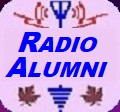
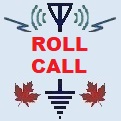
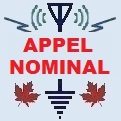
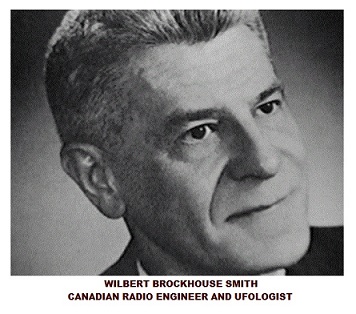 Wilbert B. Smith came from Vancouver and worked under
Wilbert B. Smith came from Vancouver and worked under

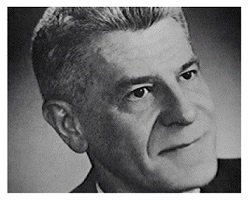 Wilbert
Smith was born in Lethbridge, Alberta, graduated from University of British
Columbia in 1933 with a B.Sc. in electrical engineering and went on to obtain
his M.A.Sc in 1934 at the same university. After graduation he became chief
engineer for radio station CJOR in Vancouver.
Wilbert
Smith was born in Lethbridge, Alberta, graduated from University of British
Columbia in 1933 with a B.Sc. in electrical engineering and went on to obtain
his M.A.Sc in 1934 at the same university. After graduation he became chief
engineer for radio station CJOR in Vancouver.